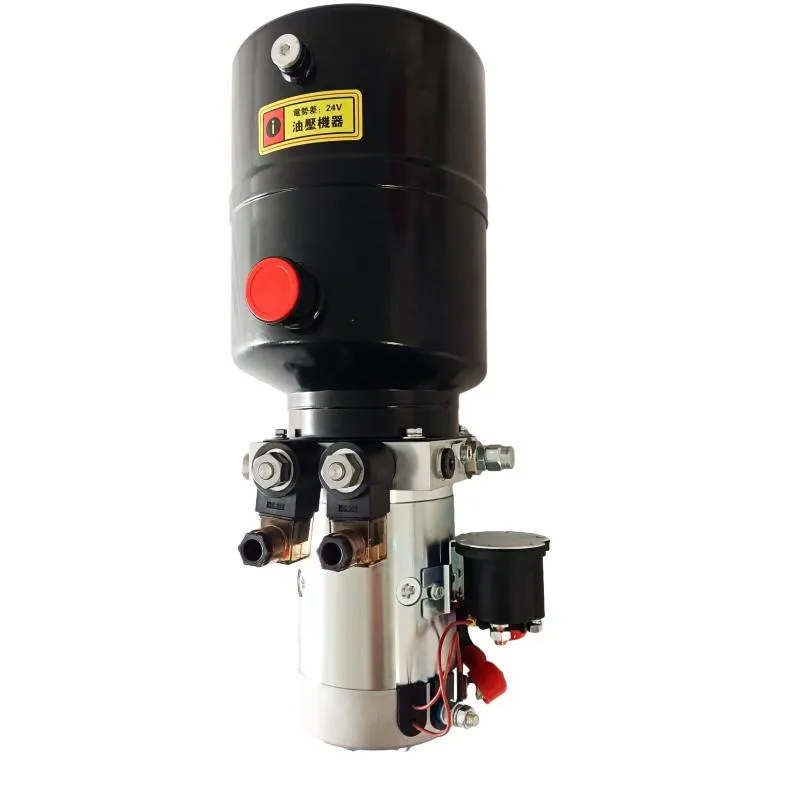Okt . 01, 2024 01:41 Back to list
Modifying Seals in Hydraulic Cylinders for Enhanced Performance and Longevity
Changing Seals in Hydraulic Cylinders A Comprehensive Guide
Hydraulic systems are essential in various industries, offering the power and efficiency needed to perform heavy-duty tasks. At the heart of these systems lie hydraulic cylinders, which convert hydraulic energy into mechanical motion. However, like any other mechanical component, hydraulic cylinders may require maintenance, particularly seal replacement. Changes in seals are crucial for ensuring optimal performance and prolonging the life of the hydraulic cylinders. This article provides a comprehensive overview of changing seals in hydraulic cylinders, including why it matters, the signs that seals need changing, and a step-by-step guide on how to perform the replacement.
Importance of Keeping Seals in Good Condition
Hydraulic seals play a pivotal role in maintaining the efficiency and functionality of hydraulic systems. They ensure that hydraulic fluid does not leak out of the cylinder while preventing dirt and contaminants from entering. Over time, seals can wear out due to various factors such as pressure, temperature fluctuations, and chemical interactions with the hydraulic fluid. Regularly changing these seals is vital for several reasons
1. Leak Prevention Worn or damaged seals can lead to fluid leaks, causing a decrease in system efficiency and ultimately leading to system failure.
2. Equipment Longevity High-quality seals help protect the inner workings of the hydraulic cylinder from contaminants, prolonging the life of the components.
3. Operational Efficiency Properly functioning seals ensure that all hydraulic operations run smoothly, enhancing performance and reducing energy consumption.
4. Safety Hydraulic leaks can pose severe safety hazards, particularly in industrial settings where machinery operates under high pressure.
Signs That Seals Need Changing
It’s essential to closely monitor the performance of hydraulic cylinders to identify when seals may need replacement. Here are some common signs indicating that it’s time to change the seals
- Fluid Leaks The most obvious sign is visible fluid leaking from the actuator. This can occur at various points, including the rod, piston, or end caps.
- Cylinders Not Holding Pressure If the cylinder struggles to maintain pressure during operation, it could be due to worn seals allowing fluid to escape
.changing seals in hydraulic cylinder product

- Increased Cylinder Movement or Drift There may be excessive movement or “drifting” when the cylinder should be holding a position, indicating a potential seal failure.
- Gaining Hydraulic Efficiency A noticeable drop in the power or speed of the hydraulic system could also indicate compromised seals.
Step-by-Step Guide to Changing Seals
Changing the seals in a hydraulic cylinder can be a complex process, so it’s vital to approach it methodically. Here’s a step-by-step guide to help you through the task.
Step 1 Gather Necessary Tools and Materials Before beginning, ensure you have the right tools a wrench set, a seal kit specific to your hydraulic cylinder, a screwdriver, and a clean, flat workspace.
Step 2 Depressurize the System Safety is paramount. Make sure to turn off the hydraulic unit, relieve all pressure, and disconnect the power supply.
Step 3 Disassemble the Cylinder Carefully remove the cylinder from its mounted position. Use the appropriate wrenches to unscrew the cylinder heads and carefully pull the rod out.
Step 4 Replace the Seals Once disassembled, inspect the old seals for wear and tear. Clean the grooves thoroughly before installing new seals from your seal kit. Make sure to lubricate the new seals to avoid damage during installation.
Step 5 Reassemble the Cylinder With the new seals in place, reassemble the cylinder by reversing the disassembly process. Ensure that all components fit snugly and securely.
Step 6 Test the System Once fully reassembled, reconnect the hydraulic cylinder and power up the system. Monitor for any leaks and test the functionality of the cylinder under load conditions.
Conclusion
Regular maintenance and timely seal replacement in hydraulic cylinders are vital for ensuring operational efficiency, safety, and longevity of the equipment. By following the steps outlined above, you can successfully change the seals in a hydraulic cylinder, maintaining the integrity of your hydraulic system. Remember, proactive maintenance pays off in the long run, and staying vigilant to the signs of wear can save you significant time and resources.
-
3x8 Hydraulic Cylinder Product - High Quality OEM Hydraulic Solutions from Trusted Manufacturer
NewsJul.04,2025
-
High-Quality Hydraulic Cylinder of Sanitation Truck Reliable Manufacturers & Factory Price
NewsJul.04,2025
-
Exploring Hydraulic Cylinder Manufacturing for RV Slide-Out Precision, Reliability, Custom Solutions
NewsJun.24,2025
-
Top Hydraulic Downfeed Control Cylinder Companies Reliable Factory-Sourced Hydraulic Downfeed Control Cylinder Supplier
NewsJun.10,2025
-
China County Line Hydraulic Cylinder Supplier - High Quality & Durable County Line Hydraulic Cylinder Factory & Company
NewsJun.10,2025
-
High-Quality China Hydraulic Trailer Jack Cylinder Manufacturer Reliable Hydraulic Trailer Jack Cylinder Factory and Company
NewsJun.10,2025
